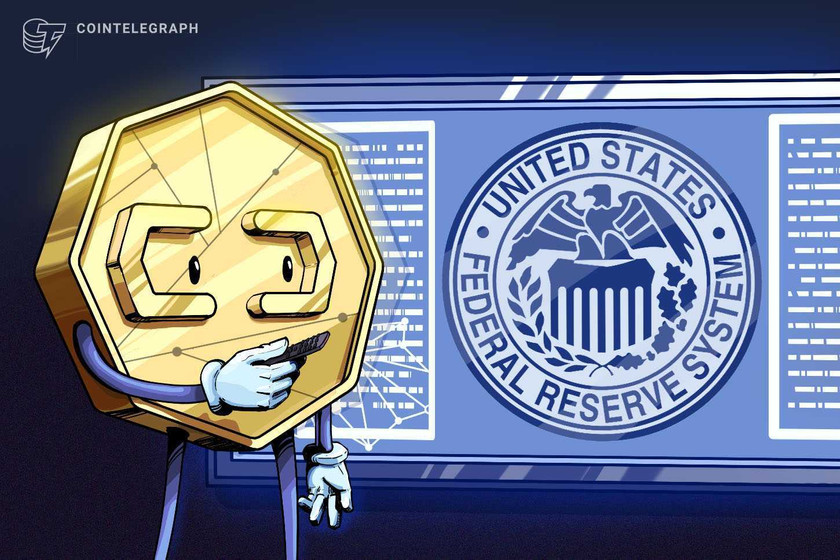Fed signals a sharp rate hike in March due to inflation — Here’s how Bitcoin traders can prepare


The U.S. Federal Reserve is set to roll out a fresh interest rate hike on March 22, and options traders could use this risk-averse strategy to generate profits.
Like it or not, for crypto investors, the U.S. Federal Reserve policy on interest rate hikes and high inflation is the single most relevant measure for gauging demand for risk assets. By increasing the cost of capital, the Fed boosts the profitability of fixed-income instruments, but this is detrimental to the stock market, real estate, commodities and cryptocurrencies.
One positive aspect of the Fed’s meetings is that they are scheduled well in advance, so Bitcoin (BTC) traders can prepare for those. Federal Reserve policy decisions historically cause extreme intraday volatility in risk assets, but traders can use derivatives instruments to yield optimal results as the Fed adjusts interest rates.
Another challenge for traders is they face pressure from Bitcoin being highly correlated to equities. For example, the 50-day correlation coefficient versus the S&P 500 futures has been running above 70% since Feb. 7. Although it does not state cause and consequence, it is evident that cryptocurrency investors are waiting for the direction of traditional markets.
It’s also possible that Bitcoin’s low emissions could prove to be a benefit as investors realize that the Fed is running out of options to curb inflation. By raising interest rates even further, it could cause the U.S. government’s debt repayments to spiral out of control and eventually surpass $1 trillion annually. This creates a huge incentive for Bitcoin bulls, but extreme caution is needed by those willing to make trades based on interest rate hikes.
Risk takers could benefit from buying Bitcoin futures contracts to leverage their positions, but they could also be liquidated if a sudden negative price move occurs ahead of the Fed’s decision on March 22. For this reason, pro traders are more likely to opt for options trading strategies such as the skewed iron condor.
A balanced risk approach to using call options
By trading multiple call (buy) options for the same expiry date, traders can achieve gains 3 times higher than the potential loss. This options strategy allows a trader to profit from the upside while limiting losses.
It is important to remember that all options have a set expiry date, so Bitcoin’s price increase must happen during the set period.
Listed below are the expected returns using Bitcoin options for the March 31 expiry, but this methodology can also be applied to different time frames. While the costs will vary, the general efficiency will not be affected.


The call option gives the buyer the right to acquire an asset, but the contract seller receives (potential) negative exposure. The iron condor consists of selling the call and put options at the same expiry price and date.
As shown above, the target profit area is above $23,800, and the worst scenario is a 0.217 BTC (or $5,156 at current prices) if the expiry price on March 31 happens below $23,000.
Related: Bitcoin price enters ‘transitional phase’ according to BTC on-chain analysis
To initiate the trade, the investor must buy 6.2 contracts of the $23,000 put (sell) option. Then, the buyer must sell 2.1 contracts of the $25,000 call option and another 2.2 contracts of the $27,000 call option. Next, the investor should sell 3.5 contracts of the $25,000 put (sell) option combined with 2 contracts of the $27,000 put option.
As a final step, the trader must purchase 3.9 contracts of the $29,000 call option to limit losses above the level.
This strategy yields a gain if Bitcoin trades between $23,800 and $29,000 on March 31. Net profits peak at 0.276 BTC ($6,558 at current prices) between $25,000 and $27,000, but remain above 0.135 BTC ($3,297 at current prices) if Bitcoin trades in the $24,400 and $27,950 range.
The investment required to open this skewed iron condor strategy is the maximum loss, hence 0.217 BTC or $5,156, which will happen if Bitcoin trades below $23,000 on March 31. The benefit of this strategy is the wide profit target area, yielding a better risk-to-reward outcome than leveraged futures trading, especially considering the limited downside.
The views, thoughts and opinions expressed here are the authors’ alone and do not necessarily reflect or represent the views and opinions of Cointelegraph.
This article does not contain investment advice or recommendations. Every investment and trading move involves risk, and readers should conduct their own research when making a decision.


































